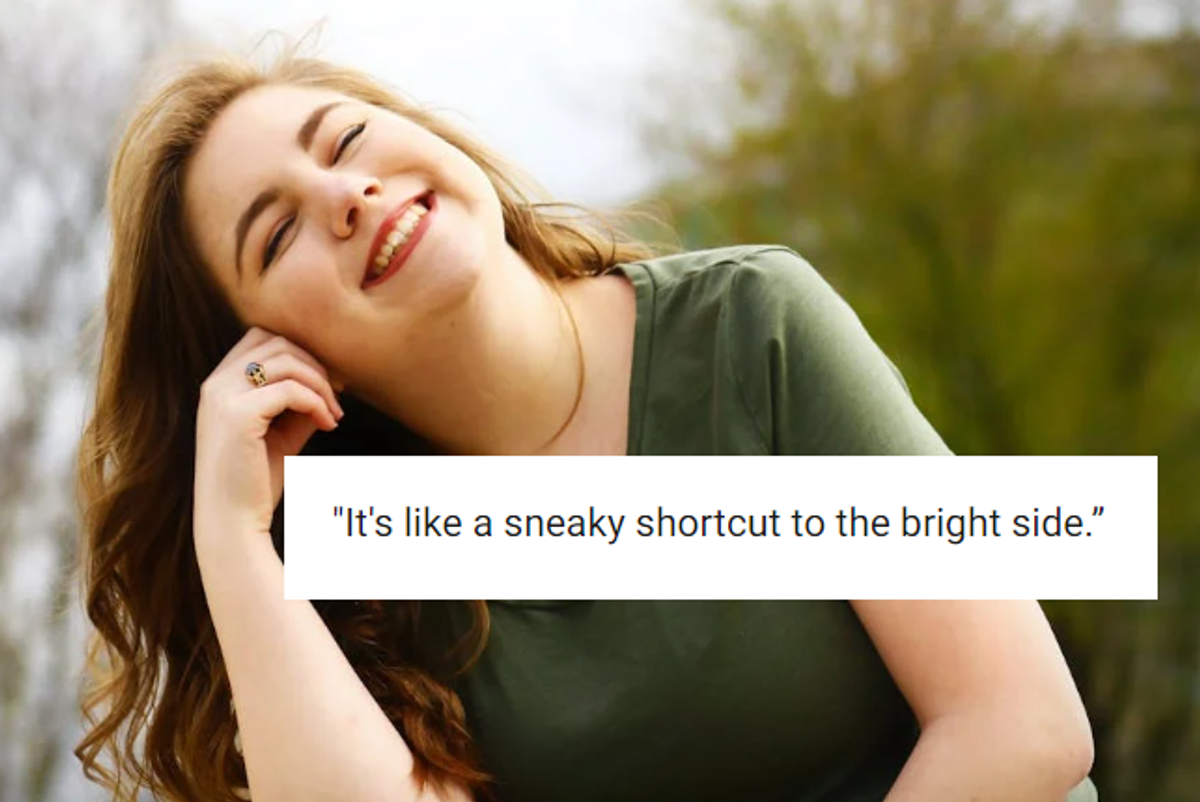Positive psychology expert shares how her simple 'Monday Math' can help you live your best life
It's a positive wake-up call.

A woman enjoying her life.
It can be frustrating to feel motivated enough to pursue your dreams when your life is already packed with responsibilities and you have a limited amount of energy and attention. But we all have those things in life we’ve always wanted to do, such as learning a skill, traveling, or becoming more physically and mentally fit.
Jodi Wellman, who has a Master’s degree in applied positive psychology from the University of Pennsylvania and founded Four Thousand Mondays, coaches people on how to be more motivated by facing their limited time on Earth.
The concept may seem a bit morbid initially, but she says that when people honestly appraise their mortality, it’s great for long-term motivation. “My top tip is to get granular with what I call mortality math,” Wellman told CNBC Make It. “So we have to get really in tune with the temporary nature of our lives ... because otherwise, we won’t take action, we will languish.”
Wellman has a calculator on her site that shares the number of Mondays you have left based on current life expectancy. (The following is a calculation for a 47-year-old man.)

The number of Mondays a 47-year-old man has left.
Wellman believes that when we truly understand we can only put things off for so long, we are more likely to follow our passions. “Later is an elusive time that may never come,” Wellman said. It’s also worth considering that some of the Mondays come when we’re older when it's more difficult to travel or do things that require physical strength.
“If you were going to die tonight, what would you wish you had taken action on? Maybe there’s an opportunity to start that today,” she added.
Mondays help put our lives in perspective. For many, it’s the first day back at work after the weekend, when it's time to get back on task, make new plans, start a new habit, or take on new responsibilities. Knowing there are only so many left can be a great motivator.
Wellman’s Four Thousand Mondays philosophy is based on the psychological concept of temporal scarcity, which states that it can be challenging to find joy in some of life’s pleasant experiences unless we know that they will come to an end.
It’s also based on the Freudian principle that we tend to seek pleasure and avoid pain and we will go to great lengths to prevent momentary pain. This can hinder us from pursuing our dreams which might involve a bit of initial discomfort.
By counting the number of Mondays we have left, we can avoid having painful end-of-life regrets when we realize that time is running out on our dreams. Wellman hopes that her philosophy provides a wake-up call for people to start living the life they always wanted because it’s later they think.
“We can fathom our deathbed regrets, for example, to sprinkle that dose of ‘oh sh**’ we need to take action in our lives,” she wrote on her blog. “We can focus on our limited lifespans and live with verve and vigor, to avoid the pain and heartache of a lackluster life we didn’t try hard enough to enjoy. In short, we will brazenly embrace the dark side… like a sneaky shortcut to the bright side.”
- A trauma psychologist weighs in on the risks of 'motivational' pressure during quarantine ›
- Woman shares her therapist's surprisingly helpful mental health tip: 'Run the dishwasher twice' ›
- The simple, yet powerful shift that can actually keep you motivated ›
- The one word that explains why the world feels so 'deeply off' for millions of people - Upworthy ›





 Rihanna Nails GIF
Rihanna Nails GIF A photo of Helen and Bill in their uniformsImages provided by Drew Coyle
A photo of Helen and Bill in their uniformsImages provided by Drew Coyle The map provided by Helen to Bill@crewdoyle/
The map provided by Helen to Bill@crewdoyle/ Helen and Bill, happy and and content, and oh so in love. Image from Drew Coyle
Helen and Bill, happy and and content, and oh so in love. Image from Drew Coyle Good luck trying to catch a gazelle.
Good luck trying to catch a gazelle. Chickens will eat just about anything.
Chickens will eat just about anything. There's actually a big difference between horses and zebras besides just the stripes.
There's actually a big difference between horses and zebras besides just the stripes. A photo of a portable carbon monoxide detector from Amazon
A photo of a portable carbon monoxide detector from Amazon


